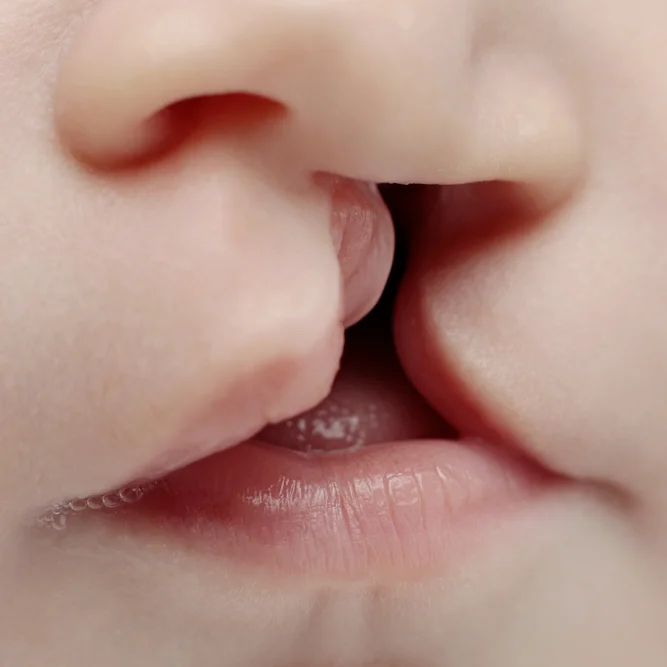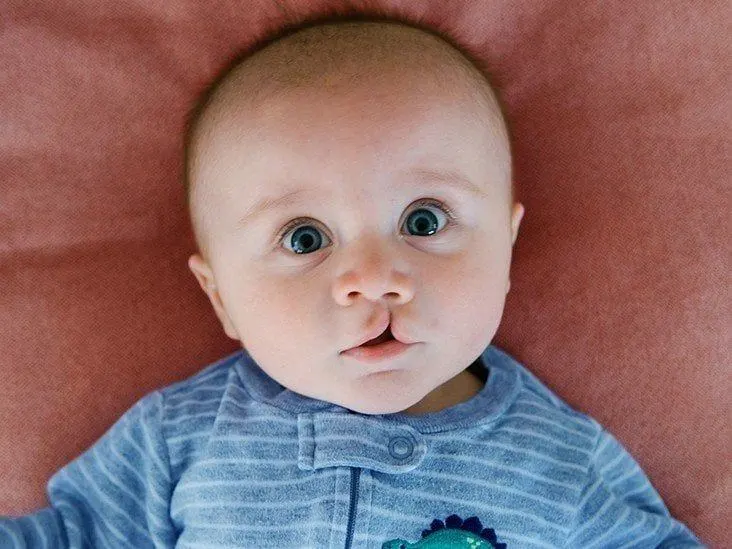Empower Your Health & Speech With
Palate Repair Surgery in Riyadh
Speech and Smile Makeover Awaits!
Read in Arabic
The health of your child is the most important thing, you can’t neglect it. Cleft palate is a disorder typically common in babies causing it difficult for the baby to eat, speak, and hear properly. This disorder in babies isn’t their fault but is caused by some genetic or environmental elements. As a parent, it is hard to see your young ones struggle with feeding, hearing, and breathing as well but worry no more this disorder can be cured. Read below and learn about Palate Repair Surgery in Riyadh and book an appointment now.
Procedure Time
1 - 2 Hours
Downtime
1 - 2 Weeks
Back to Work
1 - 2 Weeks
Results
1 - 2 Months
Quick Facts
- Cost: Variable on the Treatment
- Results: long-lasting
- Duration of Treatment: 2 to 3 hours
- Type of Procedure: Little painful
Palate Repair Surgery in Riyadh!
The surgery is a little painful for the babies but necessary to achieve their health. The surgery involves the closing of the cleft palate that was previously defective in the womb of the mother before birth. The surgery is normally carried out when a baby is 11 months older or above this age.
The aim of the procedure is to achieve a normal and natural-looking mouth that helps the baby to feed, hear and speak properly. The disorder can also impact the regular breathing of the baby. Anesthesia is required to perform the surgery and openings are repositioned and locked using stitches. The time period of surgery can be between 2 to 3 hours and babies are kept in the ward to monitor for more than 3 days normally.
Benefits
- Baby eats better.
- Enhanced hearing and speech.
- Prevention from diseases.
- Breathing is also improved.
- Improved articulation.
Regain Your Comfort & Confidence – Schedule Your Palate Repair Surgery at Enfield Royal Clinic Saudia!
The Procedure Followed at Our Clinic
Below are mentioned the steps done by our surgeon:
- Comprehensive Evaluation: Each patient undergoes a thorough evaluation by a multidisciplinary team consisting of a plastic surgeon, an otolaryngologist, a speech therapist, and other relevant specialists to assess the extent of the cleft and its impact on the patient’s speech and feeding abilities.
- 3D Imaging and Planning: Advanced medical imaging techniques, such as 3D CT scans and digital modelling, are utilized to create a precise anatomical representation of the cleft. This allows the surgical team to plan the procedure with meticulous precision.
- Individualized Treatment Plan: Based on the patient’s unique anatomy, speech patterns, and functional needs, the surgical team customizes a treatment plan, choosing from various palatoplasty techniques to ensure optimal results.
- Anesthesia: The patient is placed under general anesthesia to ensure their comfort and safety during the procedure.
- Incision and Tissue Mobilization: A carefully planned incision is made along the edges of the cleft, exposing the underlying muscles and tissues. These tissues are gently mobilized to create a tension-free closure.
- Soft Tissue Reconstruction: The surgeon uses advanced tissue grafting techniques to reconstruct the soft tissues and close the gap in the palate. Whenever possible, local tissues are used to reduce the need for foreign materials.
- Muscle Reconstruction: Special attention is given to reconstructing the muscles of the soft palate to optimize speech function and prevent nasal regurgitation during eating and drinking.
- Bone Grafting (if necessary): In cases where the cleft extends into the bony palate, bone grafts harvested from the patient’s own body or synthetic materials are utilized to restore the integrity of the hard palate.
- Wound Closure: The incisions are meticulously closed with dissolvable sutures to minimize scarring and promote optimal healing.
Post-operative Care and Follow-Up
- Speech Therapy: Speech therapy starts soon after surgery to help the patient adapt to their repaired palate and improve speech clarity.
- Nutritional Support: A specialized diet plan is provided to ensure adequate nutrition during the initial healing phase.
- Regular Monitoring: The patient is closely monitored during the postoperative period to address any potential complications promptly.
- Long-term Follow-up: Long-term follow-up is essential to assess speech development and any potential secondary issues that may arise, ensuring appropriate interventions are made as needed.
Why Choose Enfield Royal Clinic For Palate Repair Surgery?
We know the importance of the treatment and the significance of your baby’s health. Considering the depth of the disorder and the seriousness of the surgery we have a well-trained team of professionals and modern tools to carry out the procedure. Enfield Royal Clinic offers you the best price for Palate Repair Surgery in Riyadh with effective and long-lasting results.
Book us Now!
Fill out the form below and book us now for Palate Repair Surgery in Riyadh and end the sufferings of your child.
FAQs.
It occurs due to some genetic problems and environmental elements as well.
The treatment is recommended at the age of 11 months or above.
No, it is minimally painful.
To help young ones have a normal and healthy life.
Yes, the surgery is long-lasting and with effective results.
Relevant Treatments.

Cleft Lip Surgery
Are you tired of cleft lips as they are affecting your confidence and happiness? It is a common defect that affects many children and individuals around the globe. But worry not as there are advancements in medical science that make it easier to get rid of cleft lips. Now you can perfectly treat this condition with cleft lip surgery in Riyadh.

Lip Reduction
Are you constantly embarrassed by your excessively huge lips? Do you want perfectly proportioned pouts which are harmonic and balanced? Look nowhere else! Riyadh’s Lip Reduction In Riyadh is the perfect option you’ve got. Learn how this common cosmetic treatment is changing how people enhance their natural beauty. Bid farewell to your lip
Relevant Posts.

Palate Repair Surgery Cost in Riyadh
Are you stressed due to your child’s health? The disease is not your fault, as parents it is difficult to see your baby with speaking, breathing, and feeding problems. But you do not need to worry anymore because we offer manageable Palate Repair Surgery Cost in Riyadh to get rid of this disorder for a lifetime. Read this article to learn more about it! This procedure is conducted to improve the top of your mouth and is generally accomplished in the premature ages of the child. This procedure is surgical and also called cleft palate surgery.




